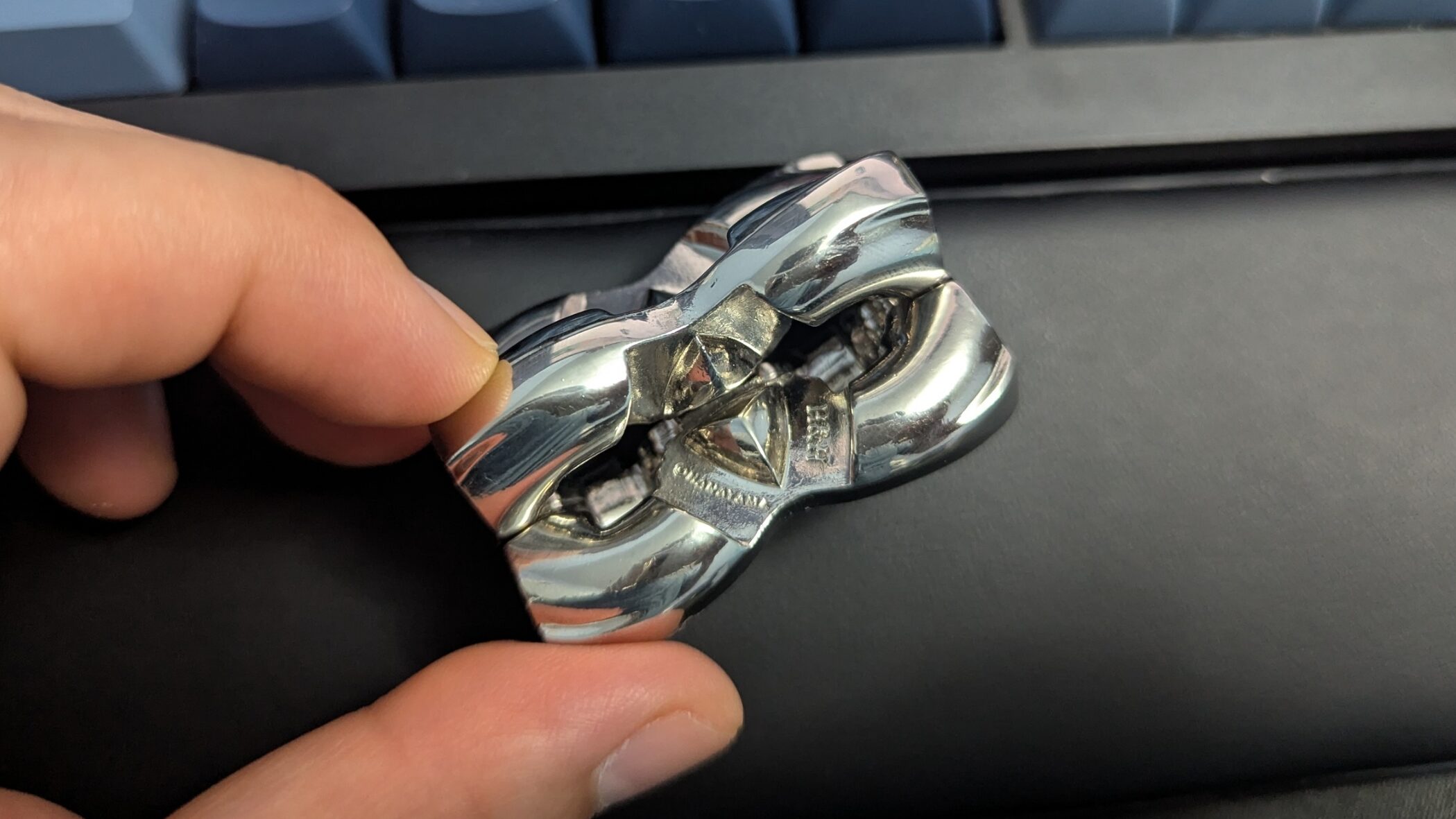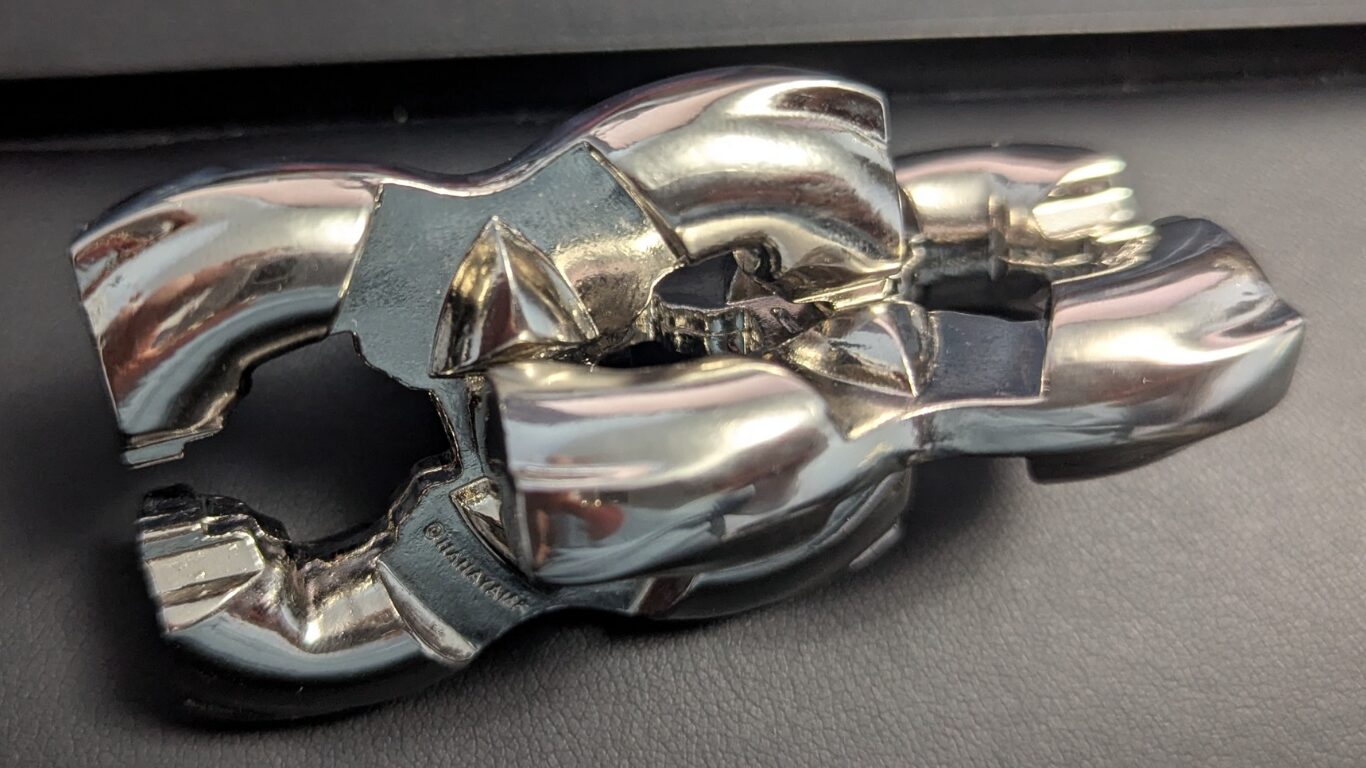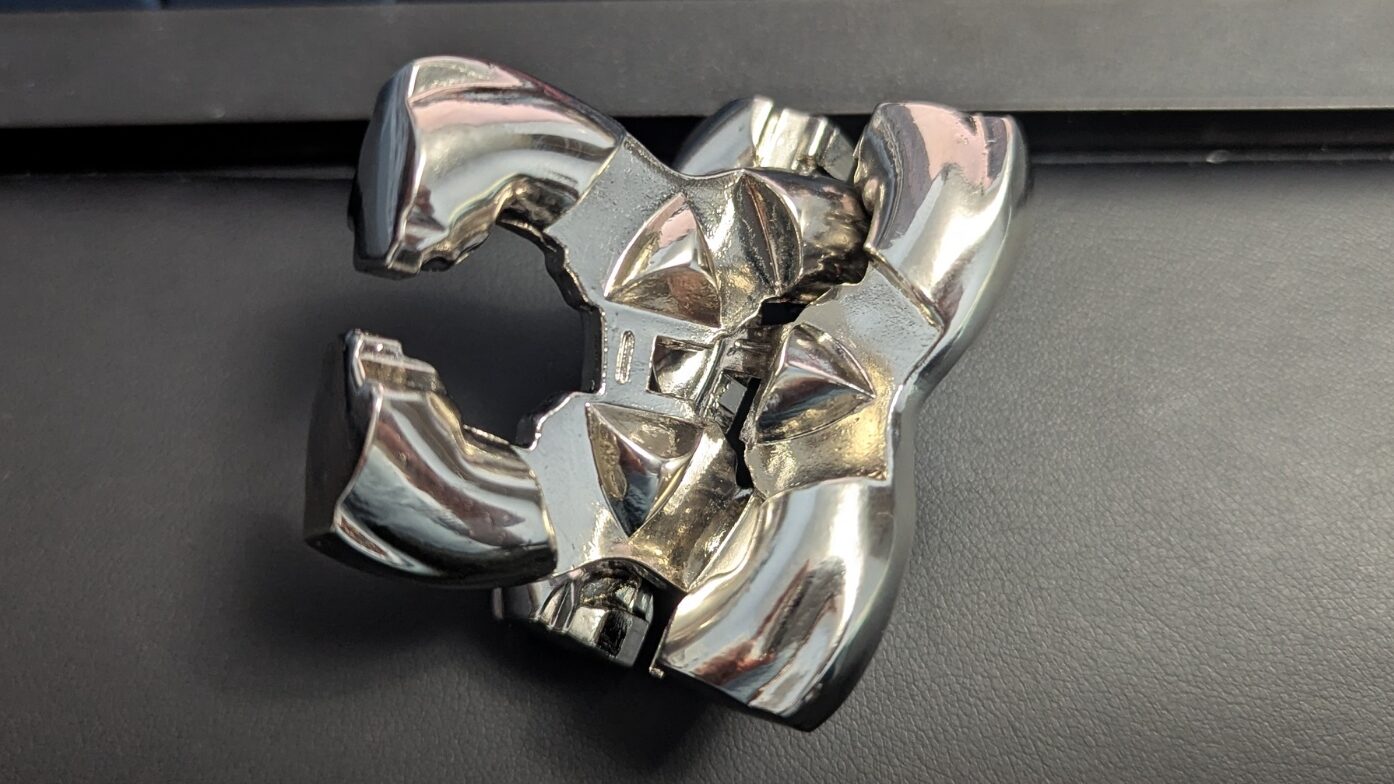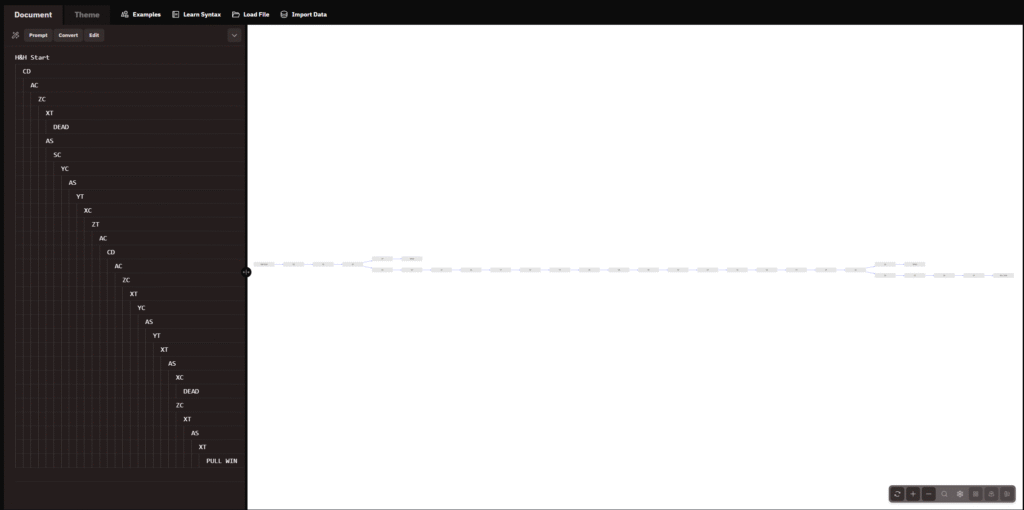
This ©Hanayama Cast H&H puzzle actually seems to come with few different versions for which the solutions are actually different. My box is marked with SC23-V 1352 in emboss, though I’m not actually certain if that’s how they track the variations. My solution at the end may be different from yours. But that’s okay! This isn’t about giving a fish, this is about teaching you how to fish, so you can find your own solution.
This puzzle is a lot more like a simple 2D maze than it appears, it just that it’s in 3D and hard to visualize. But just like a 2D maze, once you go to the wrong way, you’ll get stuck and have to return to the previous state to make a different choice.
The only thing that you need to do with care is to make sure that you don’t get lost and go back and forth. To do that, create a system to track your progress.
Creating Rules for Consistency
First, let’s make it so that only one of the two pieces move. Since it’s easier to track this way. As the only visible markings on the puzzle is the embossed ©Hanayama and H&H letterings, we’ll set that as a fixed point. For example, have the letterings always face you and point down, never moving. And move only the 2nd piece.
Then create a set of moves that you can make. This is what I came up with as all possible moves.
| AC | Across Center From Middle |
| AS | Across Center from the Side |
| CU | Center Rotate Up |
| CD | Center Rotate Down |
| CT | Center Rotate Toward |
| CA | Center Rotate Away |
| ZC | Z Clockwise |
| ZT | Z Counter-clockwise |
| YC | Y Clockwise |
| YT | Y Counter-clockwise |
| XC | X Clockwise |
| XT | X Counter-clockwise |

Across center refers to where the pincer of the H moves across the center, whether it be from inside or from the side. Although only one of two will be possible given the situation, I’ve made this redundancy to make following it again easier (at least in my opinion).

Center rotate is when the H rotates around the grooves in the middle. These rotations are only valid when they do a complete 180 degree turn. As such, I did not make them into two separate steps. I’ve decided up, down, away and toward with respect to the outside piece.
As for which is clockwise and counter-clockwise, we’ll use the right hand rule. In short, point your right hand thumb in the orientation in which it’s spinning, and if it’s spinning in the same direction as your other fingers, it’s counter-clockwise. And if it’s in the opposition direction, it’s clockwise.
I’ve personally set it so that X is the direction towards me, Y to my right, and Z to up from my point of view.
You can set the rules differently, it only matters that you do it consistently.
Writing Down the Steps & My Solution
Now with the rules set, just write down every time you make a move. It might be even better if you use a decision flow-chart like flowchart.fun.
My result came out to something like this:

As you can see, I only made the wrong move only twice in the above chart which caused me to reach a dead end, where I can’t make any move but go back. But what was important here is that I didn’t make further wrong moves after that. Or get confused on what I did previously and undo a move unintentionally.
The puzzle itself is actually fairly straight forward once you write it down and see it this way. Difficulty of this puzzle exists in making you get disoriented and causing you to go back and forth.

And to reassemble into the origin state, just go backwards on what you just wrote down!
Hope that was helpful, and a fun challenge! 🙂

Leave a Reply